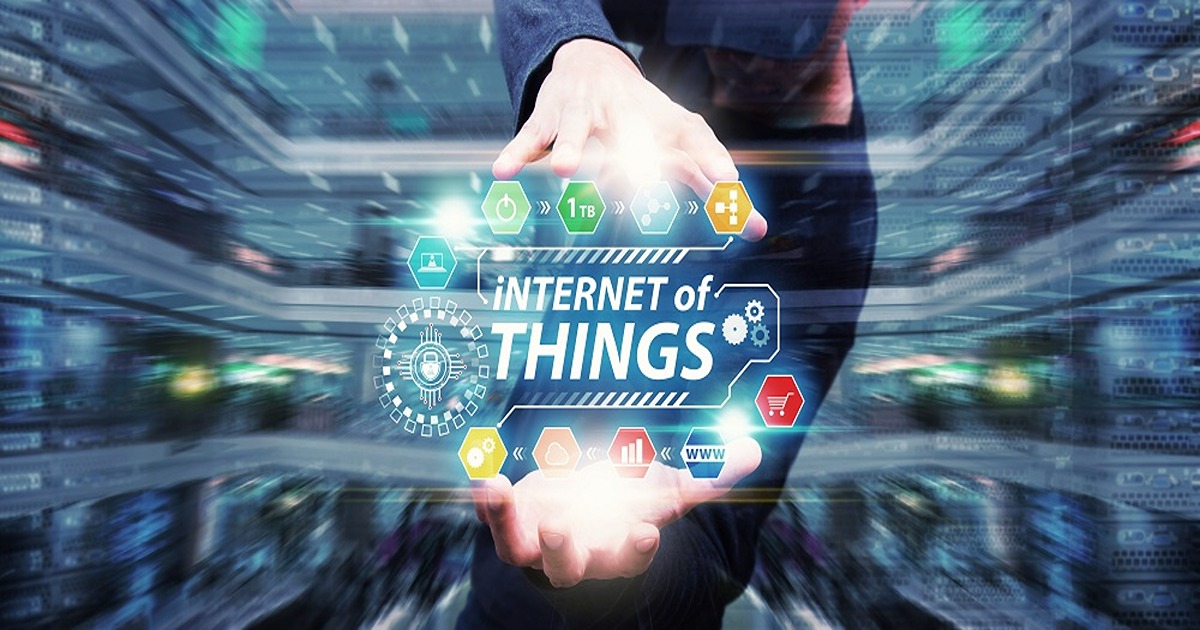
IoT Security
Article | July 5, 2023
Explore the IoT security solutions for critical issues and proactive solutions for the safe implementation of connected devices. Delve into cross-domain interactions for secure data storage.
Contents
1. Introduction
1.1 Significance of IoT Security for Safe Implementation
2. IoT Security Landscape
2.1 Emerging Threats in IoT Environments
2.2 Importance of Proactive Security Measures
3. Challenges Posed in IoT Systems
3.1 Cross-Domain Interactions
3.2 Denial of Service (DoS) Attacks
3.3 Insecure Interfaces and APIs
3.4 Vulnerable Third-Party Components
3.5 Safeguarding Data Storage and Retention
4. Solutions to Prevent Threats
4.1 Secure Integration and Communication
4.2 Traffic Monitoring and Analysis
4.3 Robust Authentication and Authorization Protocols
4.4 Patch Management and Vulnerability Monitoring
4.5 Access Control and User Authentication
5 Conclusion
1. Introduction
1.1 Significance of IoT Security for Safe Implementation
The significance of IoT connectivity and security for safe implementation is paramount in today's interconnected world. Some essential points highlight its importance at both the business and advanced levels. IoT devices collect and transmit vast amounts of sensitive data. Without proper security measures, this data can be intercepted, leading to breaches of privacy and potential misuse of personal or corporate information. Implementing robust IoT security ensures the protection of data throughout its lifecycle. Safeguarding Critical Infrastructure is crucial as Many IoT deployments are integrated into critical infrastructure systems such as power grids, transportation networks, and healthcare facilities. A breach in the security of these interconnected systems can have severe consequences, including disruption of services, financial losses, and even threats to public safety. IoT security helps mitigate these risks by preventing unauthorized access and potential attacks.
Mitigating financial losses, ensuring operational continuity and preventing IoT botnets and DDoS attacks contribute to security as IoT devices are often integrated into complex ecosystems, supporting various business operations. In recent years, compromised IoT devices have been used to create massive botnets for launching distributed denial-of-service (DDoS) attacks. These attacks can overwhelm networks and cause significant disruptions, affecting the targeted businesses and the internet infrastructure as a whole. Robust IoT security measures, such as strong authentication and regular device updates, can help prevent these attacks.
2. IoT Security Landscape
2.1 Emerging Threats in IoT Environments
Botnets and DDoS Attacks
Botnets, consisting of compromised IoT devices, can be leveraged to launch massive distributed denial-of-service (DDoS) attacks. These attacks overwhelm networks, rendering them inaccessible and causing disruptions to critical services.
Inadequate Authentication and Authorization
Weak or non-existent authentication and authorization mechanisms in IoT devices can allow unauthorized access to sensitive data or control of connected systems. This can lead to unauthorized manipulation, data breaches, and privacy violations.
Firmware and Software Vulnerabilities
IoT devices often rely on firmware and software components that may contain vulnerabilities. Attackers can exploit these weaknesses to gain unauthorized access, execute malicious code, or extract sensitive information.
Lack of Encryption and Data Integrity
Insufficient or absent encryption mechanisms in IoT communications can expose sensitive data to interception and tampering. Without data integrity safeguards, malicious actors can modify data transmitted between devices, compromising the integrity and reliability of the system.
Physical Attacks and Tampering
IoT devices deployed in public or accessible locations are vulnerable to physical attacks. These attacks include tampering, theft, or destruction of devices, which can disrupt services, compromise data, or manipulate the functioning of the IoT ecosystem.
Insider Threats
Insiders with authorized access to IoT systems, such as employees or contractors, may abuse their privileges or inadvertently introduce vulnerabilities. This can include unauthorized access to sensitive data, intentional manipulation of systems, or unintentional actions compromising security.
Supply Chain Risks
The complex and global nature of IoT device supply chains introduces potential risks. Malicious actors can exploit vulnerabilities in the manufacturing or distribution process, implanting backdoors or tampering with devices before they reach end-users.
2.2 Importance of Proactive Security Measures
Security measures are vital for ensuring the safety and reliability of IoT environments. Organizations can mitigate risks and stay ahead of potential vulnerabilities and threats by taking a proactive approach. These measures include conducting regular vulnerability assessments, implementing robust monitoring and detection systems, and practicing incident response preparedness. Proactive security measures also promote a 'Security by Design' approach, integrating security controls from the outset of IoT development. Compliance with regulations, safeguarding data privacy, and achieving long-term cost savings are additional benefits of proactive security. Being proactive enables organizations to minimize the impact of security incidents, protect sensitive data, and maintain their IoT systems' secure and reliable operation.
3. Challenges Posed in IoT Systems
3.1 Cross-Domain Interactions
Cross-domain interactions refer to the communication and interaction between IoT devices, systems, or networks that operate in different domains or environments. These interactions occur when IoT devices need to connect and exchange data with external systems, platforms, or networks beyond their immediate domain. Incompatibilities in protocols, communication standards, or authentication mechanisms can create vulnerabilities and potential entry points for attackers.
3.2 Denial of Service (DoS) Attacks
Denial of Service attacks are malicious activities aimed at disrupting or rendering a target system, network, or service unavailable to its intended users. In a DoS attack, the attacker overwhelms the targeted infrastructure with an excessive amount of traffic or resource requests, causing a significant degradation in performance or a complete service outage. Protecting IoT devices and networks from DoS attacks that aim to disrupt their normal operation by overwhelming them with excessive traffic or resource requests becomes challenging. The issue here lies in distinguishing legitimate traffic from malicious traffic, as attackers constantly evolve their techniques.
3.3 Insecure Interfaces and APIs
Insecure interfaces and application programming interfaces (APIs) refer to vulnerabilities or weaknesses in the interfaces and APIs used by IoT devices for communication and data exchange. An interface is a point of interaction between different components or systems, while an API allows applications to communicate with each other. Insecure interfaces and APIs can be exploited by attackers to gain unauthorized access to IoT devices or intercept sensitive data. Ensuring secure authentication and authorization mechanisms, proper encryption of data in transit, and secure storage of API keys and credentials, thus, becomes a challenge.
3.4 Vulnerable Third-Party Components
Vulnerable third-party components refer to software, libraries, frameworks, or modules developed and maintained by external parties and integrated into IoT devices or systems. These components may contain security vulnerabilities that attackers can exploit to gain unauthorized access, manipulate data, or compromise the overall security of the IoT ecosystem. Pain points arise from the challenge of assessing the security of third-party components, as organizations may have limited visibility into their development processes or dependencies.
3.5 Safeguarding Data Storage and Retention
Data storage and retention refers to the management and security of data collected and generated by IoT devices throughout its lifecycle. Safeguarding stored IoT data throughout its lifecycle, including secure storage, proper data retention policies, and protection against unauthorized access or data leakage, poses a threat. Ensuring secure storage infrastructure, protecting data at rest and in transit, and defining appropriate data retention policies include safeguarding data and maintaining the privacy of stored data. Failure to implementing strong encryption, access controls, and monitoring mechanisms to protect stored IoT data leads to this issue.
4. Solutions to Prevent Threatsc
4.1 Secure Integration and Communication
Implement secure communication protocols, such as transport layer security (TLS) or virtual private networks (VPNs), to ensure encrypted and authenticated communication between IoT devices and external systems. Regularly assess and monitor the security posture of third-party integrations and cloud services to identify and mitigate potential vulnerabilities. Organizations need to invest time and resources in thoroughly understanding and implementing secure integration practices to mitigate the risks associated with cross-domain interactions.
4.2 Traffic Monitoring and Analysis
Deploy network traffic monitoring and filtering mechanisms to detect and block suspicious traffic patterns. Implement rate limiting, traffic shaping, or access control measures to prevent excessive requests from overwhelming IoT devices. Utilize distributed denial of service (DDoS) mitigation services or hardware appliances to handle volumetric attacks. Organizations must deploy robust traffic analysis and anomaly detection mechanisms to identify and mitigate DoS attacks promptly. Additionally, scaling infrastructure and implementing load-balancing mechanisms become essential to handle sudden surges in traffic during an attack.
4.3 Robust Authentication and Authorization Protocols
Apply secure coding practices and implement strong authentication and authorization mechanisms for interfaces and APIs. Utilize secure communication protocols (e.g., HTTPS) and enforce strict access controls to prevent unauthorized access. Regularly update and patch interfaces and APIs to address any known vulnerabilities. Organizations must conduct regular security audits of their interfaces and APIs, implement strong access controls, and regularly update and patch vulnerabilities to address these effectively.
4.4 Patch Management and Vulnerability Monitoring
Conduct thorough security assessments of third-party components before integration, verifying their security track record and ensuring they are regularly updated with security patches. Establish a process for monitoring and addressing vulnerabilities in third-party components, including timely patching or replacement. Establishing strict vendor evaluation criteria, conducting regular security assessments, and maintaining an up-to-date inventory of third-party components can help address these issues and mitigate the risks associated with vulnerable components.
4.5 Access Control and User Authentication
Encrypt stored IoT data to protect it from unauthorized access or leakage. Implement access controls and user authentication mechanisms to restrict data access based on role or privilege. Establish data retention policies that comply with relevant regulations and securely dispose of data when no longer needed. Clear data retention policies should be established, specifying how long data should be stored and when it should be securely deleted or anonymized to minimize data leakage risks.
It's important to note that these solutions should be tailored to specific organizational requirements and constantly evaluated and updated as new threats and vulnerabilities emerge in the IoT security landscape.
5. Conclusion
Ensuring the safe implementation of IoT requires overcoming various security challenges through proactive measures and a comprehensive approach. By implementing proactive security measures, organizations can mitigate risks and maintain the safety and reliability of IoT environments. Overcoming these challenges requires organizations to invest in certain integration practices, traffic analysis, authentication mechanisms, encryption protocols, and vendor evaluation criteria. Overcoming IoT security challenges for safe implementation necessitates a proactive and comprehensive approach encompassing vulnerability management, monitoring and detection, incident response preparedness, secure design practices, compliance with regulations, and robust data storage and retention mechanisms.
The emergence in IoT security encompasses the incorporation of machine learning and AI for improved threat detection, the application of blockchain for secure transactions and device authentication, the integration of security measures at the edge through edge computing, the establishment of standardized protocols and regulatory frameworks, the adoption of advanced authentication methods, and the automation of security processes for efficient IoT security management. These trends aim to address evolving risks, safeguard data integrity and privacy, and enable IoT systems' safe and secure implementation.
Read More

Industrial IoT, IoT Security
Article | July 11, 2023
Physical and digital security are changing due to cloud-based IoT software, which makes it possible to combine them and use them to utilize data better. In almost every sector, data is essential to success, and security is no exception. To better understand what's going on in your business, you can combine cloud-based solutions that contain all the information on a single interface. For instance, integrating security camera feeds with cloud-based access control systems enables real-time visual identification verification.
Utilizing cloud-based IoT technology also enhances productivity and enables quick replies. Combining digital and physical security, often known as security convergence, is another technique to optimize IoT and cloud-based security solutions. To guard against internet flaws and intrusions, a cloud-based physical security system needs cybersecurity software. In a similar vein, physical security measures prevent sensitive data from getting into the wrong hands. Teams for physical and cyber security might combine to provide a more comprehensive plan of action.
Maintaining current versions of the technology you are using in your security plan is necessary for future-proofing your technology. To ensure that your cloud-based system has no vulnerabilities that could expose your company to cybersecurity risks, it is crucial to keep all software updated. Updates can be automated and carried out remotely with cloud-based software, requiring little effort on your part to keep your software current.
You have the chance to develop a security system that is future-proof when a firm adopts cloud-based IoT technologies as part of your security plan. When organizations use IoT technology, cybersecurity is a significant concern. However, combining physical and digital security lets you ensure your cloud-based system is well-protected from vulnerabilities. In addition, your security and IT teams will be better able to manage the evolving security landscape if you combine physical and digital security ideas.
Read More

Enterprise Iot
Article | July 20, 2023
Nothing is more innovative or sophisticated than the products being made by the wearables industry in the "smart" era. Individuals track, analyze, monitor, and transmit personal data using these tangible wearable gadgets. Moreover, the adaptable wearable technology is opening up new horizons with business-focused smartphone apps. However, it is still in its early stages, and according to recent developments in this field, the major players in wearable technology are concentrating on developing products with a focus on business applications.
These intelligent Internet of Things (IoT) devices are now widely employed in a variety of businesses and help detect biometric data such as heart rate and sleep habits, among others. In the coming ten years, wearable IoT technology or devices ought to become an integral part of every individual’s daily life.
Businesses around the world are incorporating the newest technologies into their functioning and are looking at digitally altering their impact in the market. With the majority of people already accustomed to using smartphones, they are now also getting familiar with utilizing wearable technology, such as smartwatches, jewelry, and fitness bands. Therefore, the demand for applications is increasing along with technology as we become more technologically adept.
Rising Wearable Industries
Health and Fitness Wearables
The health, fitness, and fashion industries are closely related to any wearable technology or device. People are now frequently using smartwatches to monitor their heart rate and the number of steps they take when walking or running, which has boosted the industries with this technology. IoT devices include medical sensors to track progress in terms of health. It is possible to determine how healthy a person's lifestyle is by gathering accurate health statistics from these devices. Additionally, it monitors sleeping patterns, enhancing your overall quest for wellness.
Gaming Wearables
Gaming is a significant new market for wearable technology and one which is booming. The most prevalent category of wearables in the market is virtual reality (VR) headsets. With VR devices like the Oculus Rift or Playstation VR, players are immediately immersed in otherworldly experiences. Several kinds of breathtaking experiences are now accessible to players everywhere, thanks to VR wearables.
Connected Cars
Automobiles are steadily gaining traction among IoT devices, but they are still a small market (just 0.05 percent of all connected devices are cars), and Ford and Tesla are vying for the top spot. Ford has dominated the connected car market, with Subaru being the only other manufacturer to see any appreciable growth in new connections since July 2020. In contrast, other producers are fighting for a sizable market share as the potential to grow this segment is highly exponential.
Conclusion
Today, wearable technology is planned, developed, distributed, and used in a variety of consumer and corporate markets. The ways in which these markets overlap and influence one another are constantly changing. IoT will significantly change how businesses engage with customers, streamline their operations, and contribute to the creation of a system that relies on such data.
Read More

Industrial 4.0
Article | December 16, 2021
Manufacturers were already digitizing their processes before March 2020. The COVID-19 pandemic gave IT and operational professionals in the manufacturing space reasons to want to move faster. Teams that can’t work on the factory floor (pandemic, weather, closed roads, etc.) need a way to monitor and control processes over the network. Supply chain woes—like wildly fluctuating demand and the container ship that blocked the Suez Canal—highlighted the need for agility. A skilled labor shortage has further accelerated plans for automation.
Digitization brings visibility and agility
The fourth industrial revolution, also known as Industry 4.0, lays the foundation of modern digital manufacturing. It brings together cyber and physical systems, automation, industrial IoT, and better vertical and horizontal integration.
The network has a starring role in digital manufacturing, connecting people and applications in any location to factory-floor assets like sensors, actuators, cameras, and industrial automation and control systems (IACS). Benefits of digitization include improved overall equipment effectiveness (OEE) uptime, product quality, worker safety, cybersecurity, 24/7 asset monitoring and faster new product introduction and accelerating plant buildouts.
Four essentials for manufacturing networks
As IT and operational professionals work to innovate traditional manufacturing facilities and operations, we must consider that digital manufacturing requires more networks. Here are guidelines for making sure your manufacturing network is up to the task.
Use network devices specifically designed for industrial environments like factories
In addition to high performance and reliability, industrial routers, switches, and firewalls need to withstand harsh environmental conditions like extreme temperatures, shock, vibration, and humidity. They also need to be able to control access, have support for real-time industrial protocols, and enable the flow of key operational data to move across applications in the cloud. Further, the operational networks they build need to be scalable and highly resilient. We designed our industrial routers and switches to meet these requirements.
Give IT and OT visibility and control into what they care about
The manufacturing network is a joint project of the IT and OT teams. If you’re on the IT team, you want a solution that works with your existing network management and security applications, and doesn’t require significant training or disruption. You want to automate network maintenance and quickly identify and solve performance issues, especially in this business-critical space. If you’re on the OT team, you’re probably not an IT expert. You want visibility of issues that impact availability, product quality, workforce effectiveness and straightforward recommendations to resolve them. Cisco DNA Center – proven in the largest IT networks – meets all these needs. It automates time-consuming manual tasks, continuously monitors network health, and provides reports and controls on an easy-to-use dashboard. Cisco Cyber Vision gives you visibility into assets and processes.
For agile manufacturing, look for “plug-and-play” deployment
Manufacturers are simultaneously expanding production, hyper-customizing products, improving operations, and launching new products and services. To achieve these goals, you need the agility to scale product capacity, change product mix, and reallocate resources as needed. Quickly shift networking and production resources where you need them using Cisco DNA Center’s plug-and-play onboarding and provisioning.
Pay careful attention to cybersecurity
Cybersecurity starts with knowing everything that is connected to your industrial network, who’s talking to each other and what they are saying. Cisco Cyber Vision automatically takes a complete inventory. OT teams use a graphical interface to create production zones (aka network segments) containing all assets that need to communicate. (The painting controller doesn’t need to talk to the assembly-line controller.) Cisco Identity Services Engine (ISE) deploys polices that block unintended communications between segments to keep malware infections from spreading. Cisco Cyber Vision also takes a baseline of each asset’s usual communications patterns, alerting OT and IT teams to unusual behavior that could be a sign of a security breach.
Prepare to do more with less
The manufacturing skills shortage has widened the skills gap, with fewer experts left on the plant floor to prevent mistakes and solve crises. Connecting your plant floor helps you do more with less. A resilient network with the four qualities I’ve described—rugged devices, IT and OT collaboration, simpler and agile network management, and cybersecurity—helps you proactively identify potential problems, discover the cause, and resolve them before they affect production or quality.
Read More